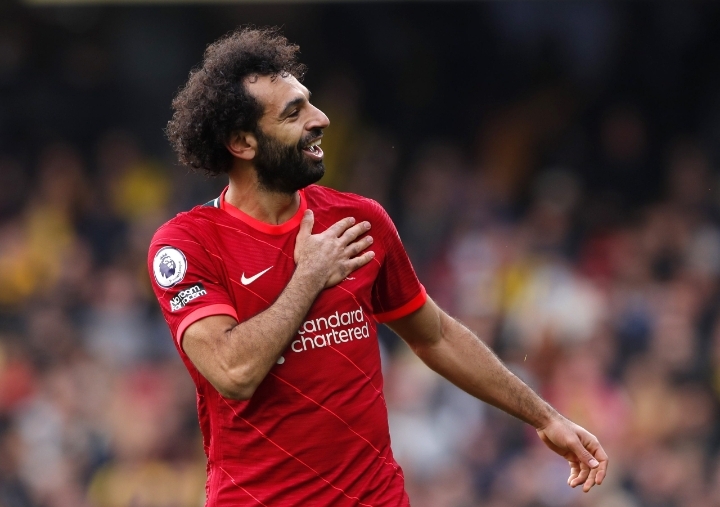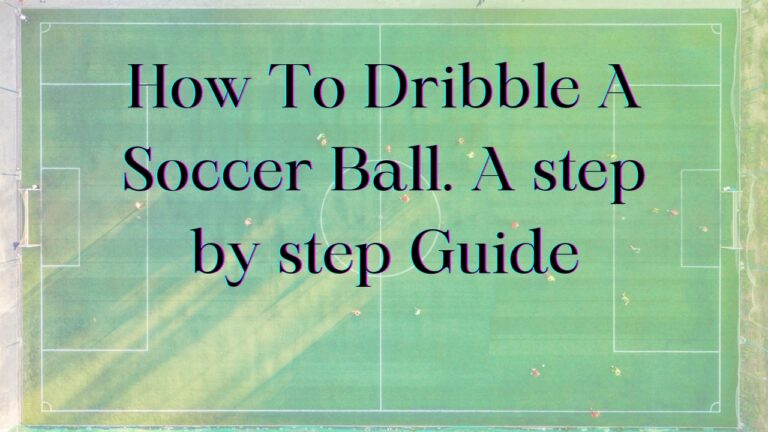Wingers are essential players in soccer who operate on the flanks, tasked with stretching the field width-wise providing crosses, and scoring chances for the team. Equipped with pace, dribbling skills, and crossing ability, wingers aim to beat defenders down the touchline and deliver dangerous balls into the box. Becoming an elite winger requires developing speed, technical skills, tactical intelligence, and a tireless work rate. This comprehensive guide will explore the key attributes and areas of focus to help wingers unlock their potential and bolster success on the pitch.
Importance of Speed and Acceleration
One of the foremost traits of successful wingers is exceptional speed and acceleration. Wingers rely on their pace to blow past defenders, sprint into pockets of space, and create separation. Developing top-end speed enables wingers to get in behind the defense and beat opponents in foot races when through on goal. Short burst acceleration is also crucial to gain a step on defenders when initiating runs or dribbles. Here are some key tips to improve speed and acceleration:
– Perform sprint and interval training like 100m sprints and suicide runs to develop top speed. Time yourself to track improvements.
– Do plyometric exercises like hurdle jumps and broad jumps to build explosive power.
– Set up an agility ladder and cone drills to sharpen acceleration and change of pace.
– Focus on correct sprinting technique – posture, arm drive, stride length, and foot strike.
– Follow proper warm-up and cooldown protocols to maximize speed gains while preventing injury.
– Compare your pace to the fastest wingers in your league to benchmark your progress.
With speed being such a premium asset for wingers, dedicating training time to maximal sprint work and explosive drills can pay major dividends. Quicker wingers have an instant advantage against defenders, enabling them to get down the sidelines and past their mark to deliver dangerous crosses.
Related Post: How to Become a Better-Attacking Midfielder in Soccer
Dribbling Skills
Wingers must develop exceptional close control of the ball, even when moving at top speed. Sharp dribbling skills allow wingers to take on defenders in 1v1 situations out wide and beat their mark to create scoring opportunities. Mastering moves like stepovers, chops, fake shots, and other techniques is crucial to unlocking a defender’s hips and blowing past them. Useful dribbling drills include:
– Dribbling courses to weave through a series of cones and poles at speed.
– 1v1 practice against teammates to simulate beating a defender. React to the defender’s movements.
– Ball mastery drills like toe taps and foundational moves to build touch.
– Analyze dribbles from star wingers to learn new techniques to add to your repertoire.
– Visualize beating defenders before games and training to program your mind and body.
– Push your change of pace – go slow to freeze defenders then explode past them.
The ability to comfortably travel at top speed while keeping the ball glued to your foot sets elite dribblers apart. Wingers should aim to “feel” the ball and move as one, maintaining flawless control and contact while weaving past challenges. Unlock your dribbling potential through dedicated repetition and continually learning new techniques for your highlight reel.
Crossing Ability
One of the primary duties of a winger is to deliver dangerous crosses into the box to create high-quality scoring chances. Whipping accurate crosses on the run is an art form, requiring proper approach angle, weight, shape, and spin on the ball. There are many different types of crosses to develop:
Driven low crosses: Hit with pace and power, difficult for keepers to collect and defenders to intercept. Ideal for hard and low strikes across the face of the goal.
Looping far post crosses: Floated to the far post just under the crossbar, allowing forwards to attack the ball. Useful for taller target strikers.
Cutbacks: Drilled crosses fired into the penalty spot area. Allows late-arriving midfielders to strike on goal.
Early crosses: Sent in before the defense can get organized and compact. He catches defenders flat-footed.
1-2 combination crosses: Make a give-and-go pass, then sprint past your mark to receive the return ball with space to cross.
Wingers can work on whipping in quality balls by visualizing runners attacking the box and focusing on form – stance, approach angle, contact, and follow-through. Isolate the technique then practice crossing to actual strikers making live runs to sharpen chemistry. Precise crosses lead to goals, so this skill should be honed in every training session.
Related Post: How to Become a Better Center Midfielder in Soccer
Off-Ball Movement
When wingers don’t have possession, their off-ball movement can be just as important to unlock defenses. Well-timed runs from wide areas into the channels between center-backs and fullbacks create numerous scoring chances. Useful off-ball movements include:
Diagonal runs in behind: Time your forward run to stay onside and sprint onto through balls played into space.
Drifting into the half-spaces: Draw defenders narrow, then cut to the flanks to receive switches of play.
Coming short: Show the ball to overload one side, then combine with midfielders.
Pulling wide and deep: Create space centrally for #10s and strikers to operate.
Far post runs: Get on the end of lofted crosses to finish chances on back posts.
Blindside runs: Hide from defenders, then accelerate to attack crosses they can’t see coming.
Interchange positions: Swap spots with the striker or midfielder to confuse markers.
Sharp and well-timed runs give attackers a dynamic threat. Analyze off-ball runs from prolific goal scorers to learn their patterns. Communicate with midfielders to coordinate movements – “checking to”, “splitting”, “in behind”, etc. Synchronized off-ball rotations open up defenses for potential breakthroughs.
Defensive Work Rate
While known for their attacking prowess, elite wingers also put in the work defensively to be complete players. Stamina and determination are required to fulfill defensive duties after accelerating up and down the flank all game. Defensive responsibilities include:
– Tracking back to provide cover for your fullback when needed. Don’t let them get isolated 1v1 out wide.
– Pressuring opponents in possession when the ball is on your side. Cut off passing lanes and force mistakes.
– Recovering quickly after losing possession to win the ball back. Counterpress immediately after losing the ball.
– Showing for the ball when your team is defending deep to limit space in behind.
– Providing an outlet on counterattacks – sprint forward immediately when possession is won.
– Using your acceleration to stop counters down your side. Buy time for your defense to recover.
– Maintaining concentration and effort for all 90+ minutes. Don’t switch off defensively.
Wingers who only focus on attacking often get exposed by elite teams. Develop the fitness, determination, and grit needed to fulfill your defensive duties. Work rate beats talent when talent doesn’t work hard!
Game Intelligence
The best wingers combine their physical gifts and technical skills with elite game intelligence to analyze scenarios and make great decisions. Intelligent wingers:
– Recognize when to pass, dribble, or take on defenders 1v1. Keep opponents guessing.
– Understand when and where to stay wide to stretch the field vs. when to cut inside and create overloads.
– Make smart off-ball movements and blindside runs to evade defenders.
– Link up combinations with midfielders and overlapping fullbacks.
– Pick the type of cross needed for each situation. Low-driven vs. high far post vs. cutback.
– Know when to switch the point of attack if their flank is congested.
– Maintain concentration and focus for the full 90+ minutes.
Great situational awareness separates the best wingers from the rest. Scan the field before receiving the ball. Study tactics and formations to sharpen your soccer IQ. Think two steps ahead of the play. Soccer is ultimately a mental game, so intelligent wingers give their team an advantage in the attacking third.
Conclusion
Becoming an elite winger requires dedication and hard work in multiple facets of the game. Pace, dribbling technique, crossing ability, off-ball movement, defensive contributions, and soccer intelligence all play crucial roles in a winger’s development. By training speed and acceleration, honing dribbling skills, perfecting crosses, sharpening runs, maintaining work rates, and studying tactics, wingers can fully realize their potential.
Improving as a winger takes time and patience, but focused training and commitment to mastering all aspects of the position will enable dramatic growth. Match the work rate of your team’s box-to-box midfielder. Watch footage of star wingers making darting runs and beating defenders. Visualize yourself executing skills like cross-field switches. Believe in your ability to beat opponents 1v1 and whip in game-changing crosses.
The life of a winger is complex, requiring attacking talent and the determination to track back defensively. Rise to the challenge and commit to becoming a well-rounded winger. Your teammates and coaches will thank you as you develop into a driving force on the flanks.
Related Post: The Vital Role of the Midfielder in Soccer





